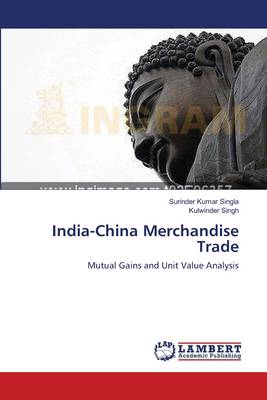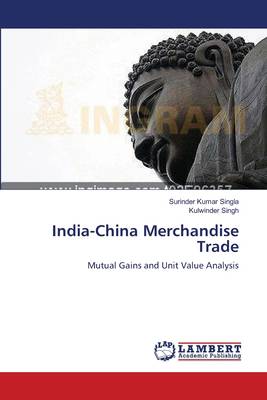
- Afhalen na 1 uur in een winkel met voorraad
- Gratis thuislevering in België vanaf € 30
- Ruim aanbod met 7 miljoen producten
- Afhalen na 1 uur in een winkel met voorraad
- Gratis thuislevering in België vanaf € 30
- Ruim aanbod met 7 miljoen producten
Zoeken
India-China Merchandise Trade
Mutual Gains and Unit Value Analysis
Surinder Kumar Singla, Kulwinder Singh
Paperback | Engels
€ 58,95
+ 117 punten
Omschrijving
India and China have emerged as robust global economic powers during the last two decades. Their economic interactions, particularly in the field of merchandise trade, have increased tremendously. China has already become the second largest trade partner of India while India's share in China's global trade is also increasing continuously. With growing trade ties between the two neighbouring countries, it becomes important to analyse the distribution of gains from their mutual trade. Hence, this study attempts to analyse the trends in India s terms of trade with China. For this purpose, India's Net Barter Terms of Trade (NBTT) with China has been computed for the period from 1992-93 to 2004-05. For most of the years, during the study period, India experienced favourable terms of trade with China as compared to its overall unfavourable terms of trade. However, it has also been found that India's terms of trade were greatly influenced by one single commodity named iron ores & concentrates.
Specificaties
Betrokkenen
- Auteur(s):
- Uitgeverij:
Inhoud
- Aantal bladzijden:
- 60
- Taal:
- Engels
Eigenschappen
- Productcode (EAN):
- 9783659165924
- Verschijningsdatum:
- 22/06/2012
- Uitvoering:
- Paperback
- Afmetingen:
- 152 mm x 229 mm
- Gewicht:
- 100 g

Alleen bij Standaard Boekhandel
+ 117 punten op je klantenkaart van Standaard Boekhandel
Beoordelingen
We publiceren alleen reviews die voldoen aan de voorwaarden voor reviews. Bekijk onze voorwaarden voor reviews.








